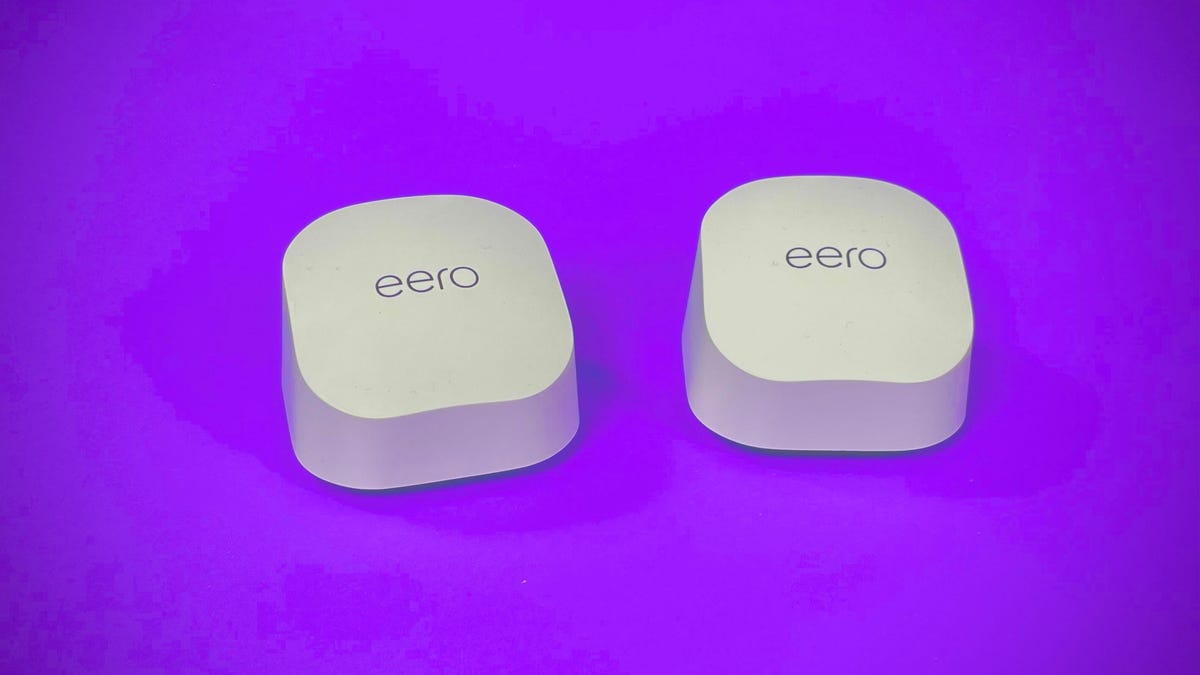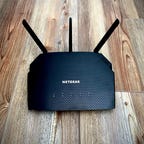In this article:
Though Wi-Fi 7 routers are on their way, for the time being, Wi-Fi 6 is still the latest generation of Wi-Fi that’s supported by most of the current generation of gadgets and devices. And to help you equip your home with the fastest and most stable internet connection possible, we’ve rounded up the best Wi-Fi 6 router options on the market right now below.
Almost every new phone and computer release supports Wi-Fi 6, and we’re starting to see support pop up among peripheral devices, too. Did you pick up an Apple TV 4K or Amazon Fire TV 4K Max media streamer for your TV? Both of those support Wi-Fi 6. Have you managed to score a new PlayStation 5 console yet? That’s a Wi-Fi 6 gadget too.
Wi-Fi 6 devices like those are backward compatible with older routers, but if you want to unlock their full potential for faster, better Wi-Fi performance, then you’ll need a Wi-Fi 6 router running your home network. That was an expensive proposition back when Wi-Fi 6 first arrived, but not anymore. Now, shopping around, you’ll find a good number of Wi-Fi 6 options available for less than $100, as well as mesh systems, gaming routers, range extenders and more. Some do the job better than others — but that’s where we come in, with comprehensive, hands-on tests to help identify the best upgrade picks for the money.
Expect regular updates to this post as we continue to put Wi-Fi 6 to the test in 2023. Whenever we find a new router that merits consideration, we’ll add it to the list.
Best Wi-Fi 6 routers of 2023
Like
- Faster performance and better range than comparable AX1800 routers
- Easy-to-use app controls
- Outstanding value
Don’t like
- Lacks advanced features
- Not powerful enough to take full advantage of gigabit internet speeds
When a router supports Wi-Fi 6, that means that it’s capable of using new features like OFDMA and 1024-QAM to deliver faster speeds and lower latency to busy networks with lots of connected devices. That’s true even with the budget-priced value picks — and among those, the one that performs the best is the TP-Link Archer AX21.
Like
- Tri-band design ensures optimal mesh performance
- Simplified setup, with extenders that automatically pair with the main router
- Speeds comparable to mesh routers that cost hundreds more
Don’t like
- Bland, slightly bulky design
- Limited retail availability
Wi-Fi Standard Wi-Fi 6Speed Rating AX3600Range Up to 5,500 sq. ft. (two devices)Wireless Networking Security WPA2, WPA3Bands Tri-Band (2.4 and two 5GHz)
This was a very good year for TP-Link, and it wasn’t just because of the Archer AX21. There’s also the TP-Link Deco W7200, which cruised through my speed tests to earn a spot as my top-rated mesh router of the year. With multiple devices working like a team of routers to spread a faster, more reliable signal across a larger area than a single router can, it’s a fantastic pick for large homes — and one that won’t set you back very much.
Like
- Excellent speeds, low latency, terrific range
- Comprehensive gaming and network customization features via Asus Router app
- Optional upgrade to a multi-gig Ethernet jack
Don’t like
- “Smart Connect” band steering doesn’t perform well in small homes (but you can turn it off)
Wi-Fi standard Wi-Fi 6Speed Rating AX5700Range Up to 2,500 sq. ft.Wireless Networking Security WPA3Bands Dual-Band (2.4 and 5GHz)
Asus is one of the top names in the gaming router category, boasting the best variety of fast, flashy routers that promise elite performance, low latency, and advanced controls for your connection. The Asus RT-AX86U is actually one of the more understated routers in that mix — it doesn’t include color-changing lights or an oversize, ostentatious design — but it’s still one of the best gaming routers you can buy. Gaming aside, it’s one of the best Wi-Fi 6 routers you can buy, period.
Like
- Reliable, consistent speeds
- Excellent value
- Better performance on high-speed, gigabit networks than other entry-level Wi-Fi 6 routers
Don’t like
- Slightly higher latency than comparable AX1800 routers
- No USB jack
Speed Rating AX1800Range Up to 1,500 sq. ft.
Gigabit internet speeds are growing in availability from a wide number of major ISPs, and they’re a great fit with the faster wireless transfer rates of Wi-Fi 6. If you’ve made the upgrade to gigabit internet speeds at home, then you’ll definitely want a Wi-Fi 6 router that can take full advantage of it.
Like
- A consistent top finisher across multiple years of speed tests
- Multi-gig Ethernet jack supports the fastest internet speeds available today
Don’t like
- Expensive and rarely on sale, despite being a few years old
Wi-Fi Standard Wi-Fi 6Speed Rating AX6000Range Up to 5,000 sq. ft.Wireless Networking Security WPA, WPA2Bands Tri-Band (2.4 and two 5GHz)
Remember how I mentioned that the TP-Link Deco W7200 outperformed every other mesh router I’ve ever tested except for one? Well, here’s the one that beat it — the AX6000 version of the Netgear Orbi mesh system.
Like
- Strong performance and speeds, with support for 160MHz channel width
- Built-in Zigbee radio and support for Matter make it a great smart home pick
Don’t like
- Slightly inconsistent bandsteering in small homes
Wi-Fi Standard Wi-Fi 6Speed Rating AX3000Range Up to 1,500 sq. ft.Wireless Networking Security WPA2, WPA3Bands Dual-Band (2.4 and 5GHz)
Going with a mesh router makes a ton of sense if you live in a large, multi-story home with a lot of space to cover. In cases like that, it’s worth it to prioritize getting a system with more than two devices in the mesh — and Amazon’s Eero 6 Plus gets you there for $300, complete with full support for Wi-Fi 6.
Like
- A dual-band mesh router that performs more like a tri-band model
- Compact, nice-looking design
Don’t like
- Slightly expensive at full price
Wi-Fi Standard Wi-Fi 6Speed Rating AX5400Range Up to 2,700 sq. ft.Wireless Networking Security WPA, WPA2Bands Dual-Band (2.4 and 5GHz)
It was a bit too pricey for me to recommend when it launched at $380 for a two-piece setup, but I’ve seen the Asus ZenWifi XD6 marked down to $300 at multiple outlets in recent weeks, which makes it a much better value.
How we test Wi-Fi 6 routers
Whenever I take a router into consideration, I put it through the same set of comprehensive, controlled speed tests to get a good sense of how it performs compared to other models. Throughout the pandemic, I’ve been running those tests out of my 1,300 square-foot home in Louisville, Kentucky, but last year, we’ve were able to move those tests back into the CNET Home test lab, where we’ve set up a 1,350 sq. ft. test environment with a gigabit fiber connection.
There are five rooms in that test space, so after setting the router up in the first of them, I run a battery of speed tests in all of them to get a sense of the average speeds at various ranges. For each set of tests, I start in the same room as the router with my test device, a Lenovo ThinkPad Wi-Fi 6 laptop. I connect to the router’s network, then I run three speed tests and record the results for upload speed, download speed and latency. Then I move to the next room and repeat.
Once I’ve finished in the fifth room, which is farthest from the router, I restart my connection and repeat all of those tests in reverse room order. This approach gives me a good sense at how the router’s performance differs when the connection starts up close as opposed to when it starts at a distance, as this can often impact your speeds. I repeat this entire process three times, during morning, afternoon, and evening hours. I’ll typically also run dedicated test runs to check the speeds on individual bands, or if the router offers any unique performance settings. All told, it adds up to hundreds of speed tests and multiple days of work for each router I review.
Which Wi-Fi 6 router is right for me?
There are three main things to consider first as you’re dialing in on a new router: the speed of your home’s internet plan, the size of your home, and the number of Wi-Fi devices under your roof that need a reliable connection. If you’re living in a small- to medium-sized home with internet speeds of 500Mbps or less, and you just need a reliable signal for your phone, laptop and streaming device, then a simple pick like the TP-Link Archer AX21 or the Netgear R6700AX should offer plenty of bandwidth and range to suit your needs. The two are largely indistinguishable unless your home has a high-speed connection, and the AX21 typically costs a little less, so I’d recommend starting there.
I test routers by recording their average speeds across five rooms in a 1,350 sq. ft. test environment with gigabit internet speeds. In my latest batch of tests, the Asus RT-AX86U stood out for fast performance, while the Netgear R6700AX punched above its weight with slightly faster speeds than the comparable TP-Link Archer AX21.
If you’ve got a house filled with smart home devices, or multiple family members who each make regular use of your Wi-Fi with a variety of gadgets, or if you’ve just upgraded your internet plan to add in gigabit speeds, you should probably consider a router with greater bandwidth potential. The tried-and-true Asus RT-AX86U is the one I’d probably recommend first because it’s been a regular standout through multiple rounds of CNET tests, including full rounds of tests on three separate networks at three separate locations.
However, if you’re living in a larger home, especially a multistory home, then it’s worth considering stepping up to a mesh router like the Eero 6 Plus, the Asus ZenWifi XD6, or the TP-Link Deco W7200, because those multiple mesh devices will help ensure a better, more reliable signal throughout the entirety of your home. You could also consider splurging on a mesh powerhouse like the Netgear Orbi AX6000, but at a cost of several hundred dollars, it’s probably overkill for most homes.
Wi-Fi 6 router FAQs
If you’ve got questions about the ins and outs of Wi-Fi 6, be sure to check out my full explainer on the standard and what makes it better than the Wi-Fi of yore. You can also reach me by looking me up on Twitter (@rycrist) or by clicking the little envelope icon on my CNET profile page to send a message straight to my inbox. In the meantime, I’ll post answers to any commonly asked questions below.
What makes Wi-Fi 6 better than before?
Are Wi-Fi 6 and Wi-Fi 6E the same thing?
Will older devices still work with a Wi-Fi 6 router?


